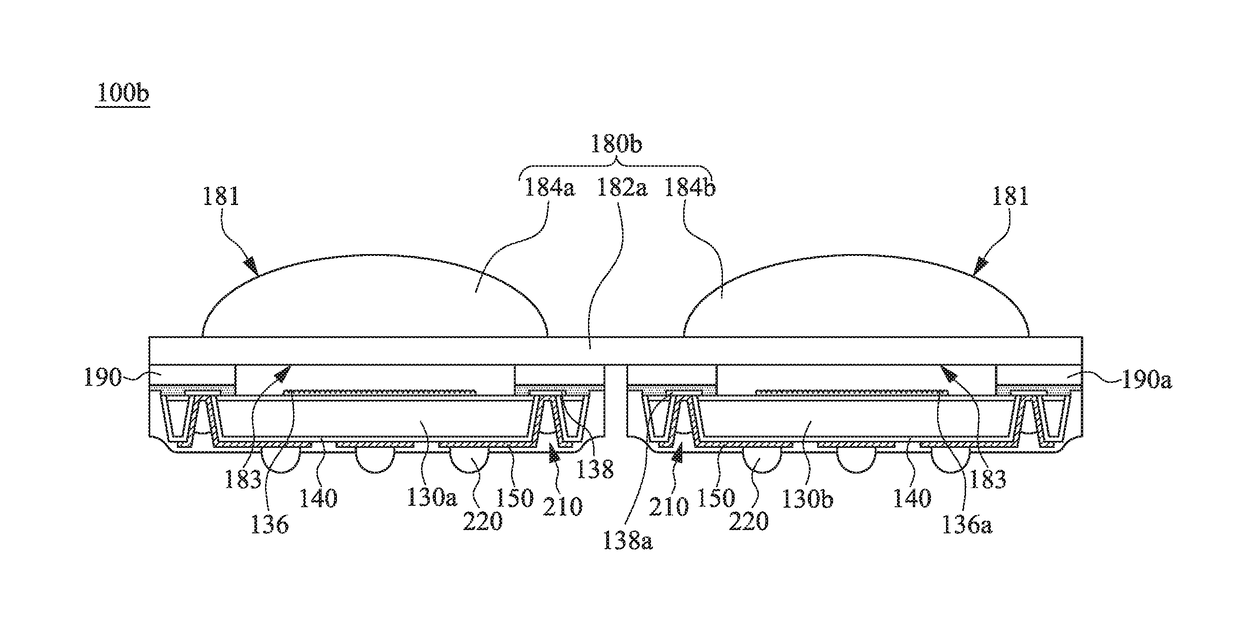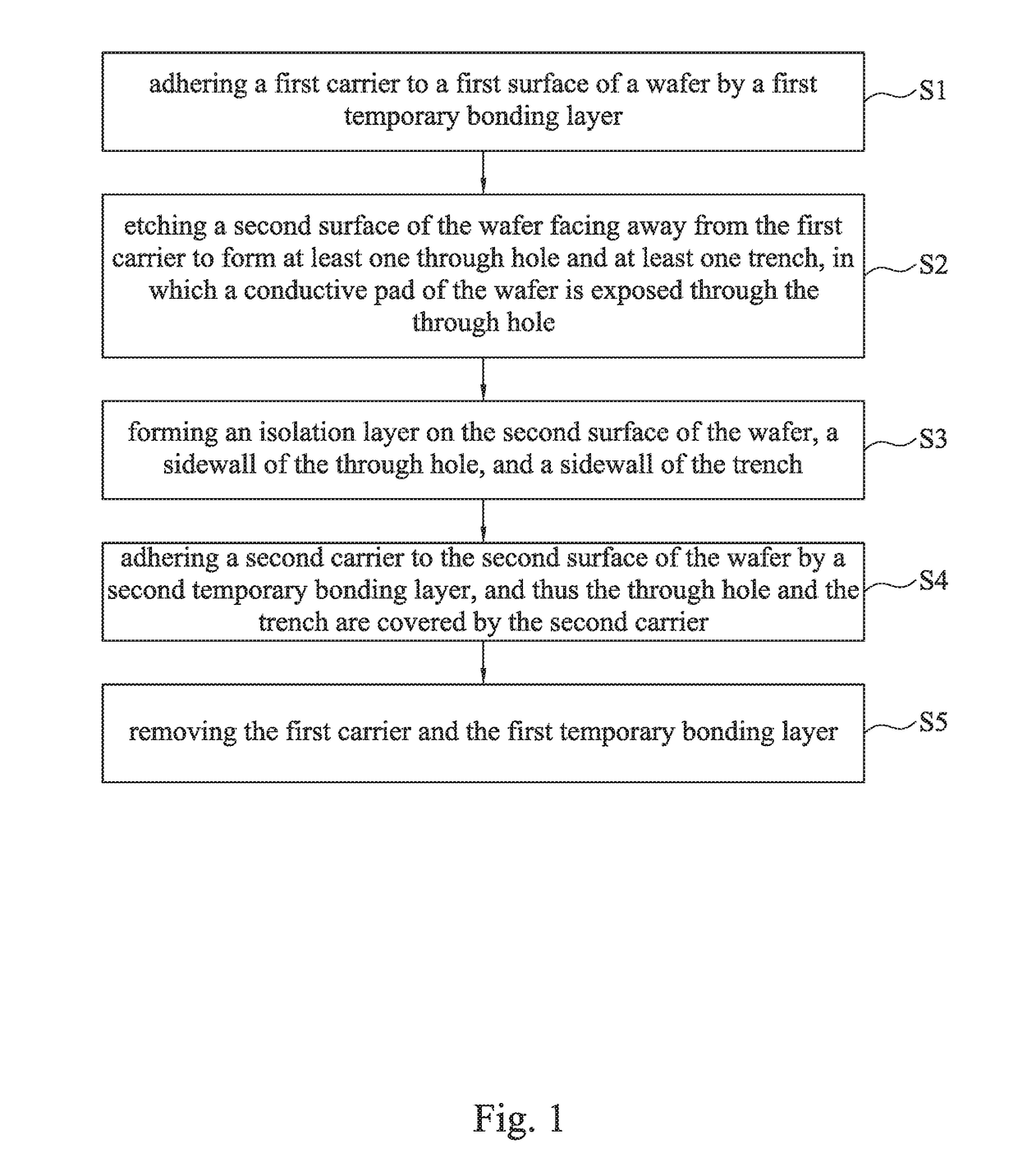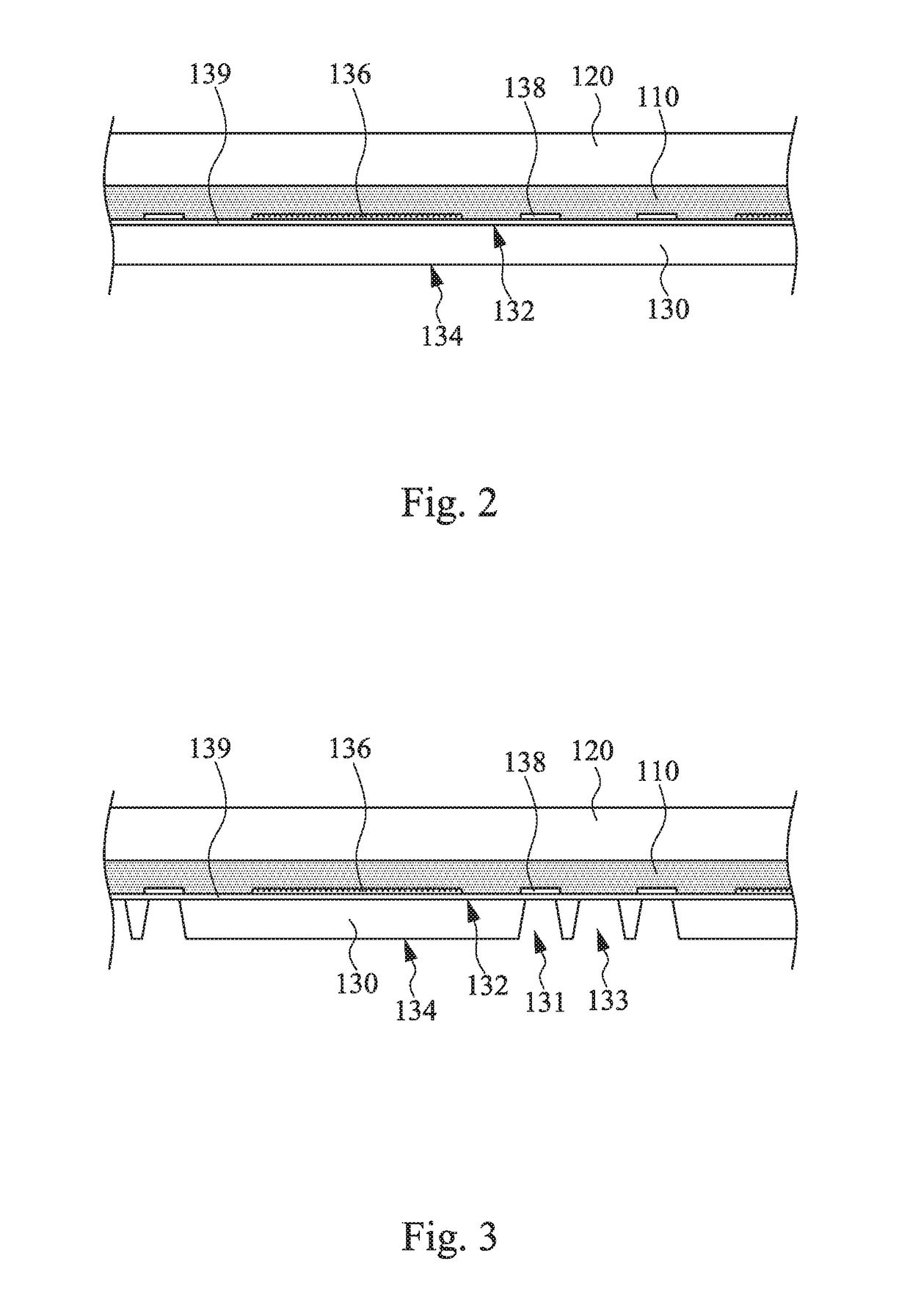Semiconductor structure and method for manufacturing semiconductor structure
a semiconductor and structure technology, applied in the direction of semiconductor/solid-state device details, semiconductor devices, radiation controlled devices, etc., can solve the problems of difficult improvement of chip package product yield, warpage of optical glass, dam elements, etc., and achieve the effect of preventing the wafer from warpag
- Summary
- Abstract
- Description
- Claims
- Application Information
AI Technical Summary
Benefits of technology
Problems solved by technology
Method used
Image
Examples
Embodiment Construction
[0030]Reference will now be made in detail to the present embodiments of the invention, examples of which are illustrated in the accompanying drawings. Wherever possible, the same reference numbers are used in the drawings and the description to refer to the same or like parts.
[0031]FIG. 1 is a flowchart of a method for manufacturing a semiconductor structure according to one embodiment of the present invention. The method for manufacturing the semiconductor structure includes the following steps. In step S1, a first carrier is adhered to a first surface of a wafer by a first temporary bonding layer. Thereafter, in step S2, a second surface of the wafer facing away from the first carrier is etched to form at least one through hole and at least one trench, in which a conductive pad of the wafer is exposed through the through hole. Next, in step S3, an isolation layer is formed on the second surface of the wafer, a sidewall of the through hole, and a sidewall of the trench. Afterwards...
PUM
 Login to View More
Login to View More Abstract
Description
Claims
Application Information
 Login to View More
Login to View More - R&D
- Intellectual Property
- Life Sciences
- Materials
- Tech Scout
- Unparalleled Data Quality
- Higher Quality Content
- 60% Fewer Hallucinations
Browse by: Latest US Patents, China's latest patents, Technical Efficacy Thesaurus, Application Domain, Technology Topic, Popular Technical Reports.
© 2025 PatSnap. All rights reserved.Legal|Privacy policy|Modern Slavery Act Transparency Statement|Sitemap|About US| Contact US: help@patsnap.com



